For the past few years, OnePlus has been the go-to brand if you were looking for a device with very few compromises. Since the brand’s inception, the focus has been on delivering incredibly powerful hardware at a fraction of the cost that most other companies charge for their devices. They haven’t always hit the mark, but for the most part, their phones have been praised for their performance, fit and finish and sheer power which is a remarkable feat for a brand that’s still considered to be the new kid on the block.
But the OnePlus 7 Pro is a different beast than what we’ve seen from them in the past. It’s not trying to play the underdog card by simply checking all the right boxes while keeping the price low. No, this phone goes all out, challenging the biggest players in the space without shame or hesitation.
As with previous OnePlus devices, this phone is packed to the brim with all the latest and greatest tech. The highlights include the latest Snapdragon 855, a stunning 6.67-inch AMOLED display with a 90 Hz refresh rate, more RAM and storage than most of us have in our laptops, a triple camera on the back, a pop-up selfie cam so you don’t have to deal with a pesky notch and a battery with enough juice to keep it all running through a long day.
I’ll be going into more detail on all of that, but first, we have to address the phone’s price to put all of this into context. The OnePlus 7 Pro is the most expensive device OnePlus has ever released, starting at $670. By flagship smartphone standards, that’s a bargain! This phone’s specs are comparable to those of the Galaxy S10+ which sells for a cool grand. But loyal OnePlus customers will point out that it’s $150 more than last year’s flagship and the biggest bump in price we’ve seen from the company in years. The good news is, the new price is justifiable, especially for Android enthusiasts who simply want the best of the best.
Buy the OnePlus 7 Pro
While the company has traditionally flaunted the power of its phones in the past, this year it’s taking a different approach, emphasizing the gorgeous display over all else. Now, I have to admit that I’m typically not a sucker for needing the best display tech out there, but I have to admit that the panel used on the OnePlus 7 Pro is mesmerizing. Seeing it here doesn’t do it justice, mainly because it’s impossible to capture its QHD+ resolution which is paired with a 90Hz refresh rate. While that may sound like overkill or just a bunch of jibberish, it means that it’s the highest resolution display OnePlus has ever used and more specifically that the panel refreshes 90 times per second. Naturally, the high refresh rate is targeted at the gaming crowd since it makes supported games look absolutely amazing, but it’s also noticeable when you’re simply scrolling through your Instagram feed or opening apps. The scrolling animations you get here are smoother than anything we’ve seen on other devices, giving you the feeling that you’re holding something truly special in your hand.
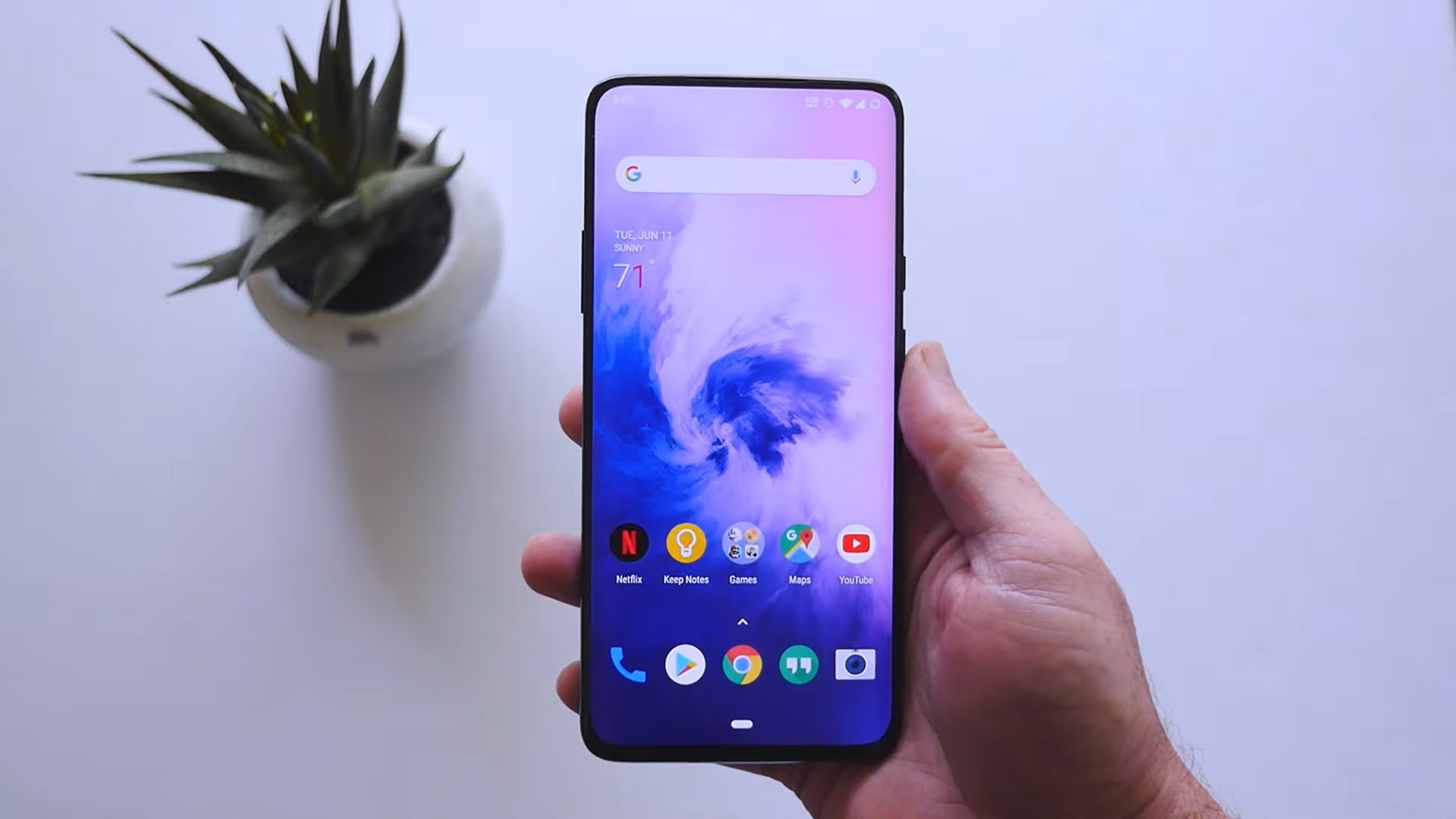
While notches and hole-punch displays are all the rage these days, you won’t find either on this phone. To preserve the incredible edge-to-edge look, the 7 Pro features a pop-up camera which only emerges from the top edge of the phone when needed. The effect of not having a camera on the front of the phone is what we’ve been imagining phones of the future would look like for the past few years.
By now, many of you know that I’m not a fan of BIG devices. I don’t have particularly large hands and I typically opt for a smaller variant of a smartphone if the option is available. That being said, the OnePlus 7 Pro is big, I mean really big. The company’s gone from building largish devices to delivering a smartphone that’s larger than the Samsung Galaxy Note 10+ which by most standards is classified as the big boy. The large display and battery also mean that the phone is quite hefty. It’s not much of an issue in most cases, but you do feel a bit of fatigue settle in during a gaming session that lasts more than 15 minutes.
There’s nothing inherently wrong with a big phone, but the decision to go this large will alienate a number of people who would love to own the new OnePlus because of all its other features. A variant with a 6-inch display would have been incredible. Fortunately, OnePlus has compensated for the phone’s size by adding curved edges on all sides which make the phone a bit more manageable. I honestly love the smoothness of the edges, but I do find the curved display a bit annoying since it adds an extra level of glare than you don’t get on most other devices.
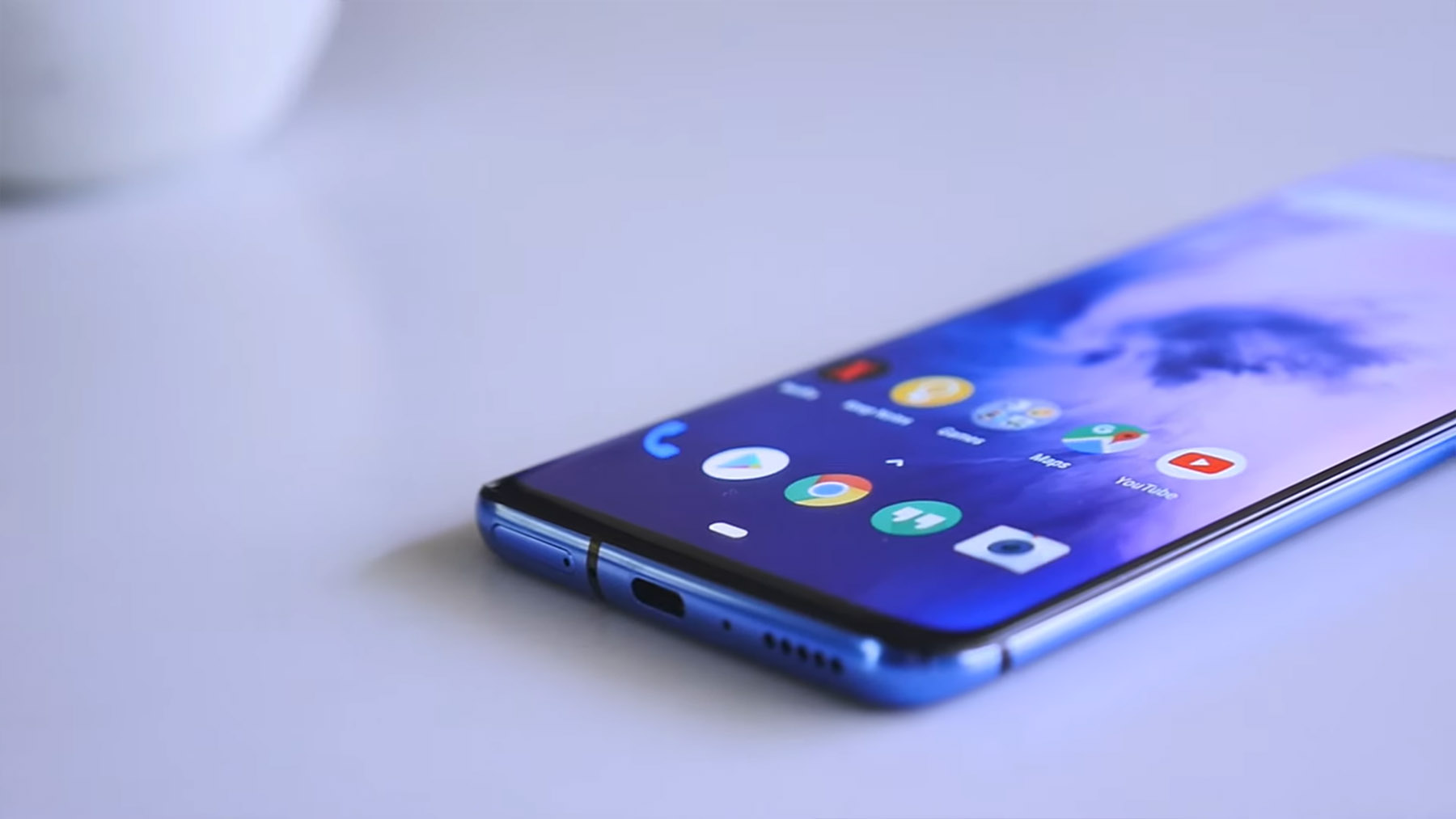
The good news is that the phone’s big footprint allows for a big battery as well. You get a 4,000 mAh cell packed inside this thing, which is more than enough to use the phone to your heart’s content in a single day with 5.5-7 hours of screen on time. Two days is even a possibility if you don’t use it as much and tweak a few settings.
Once you do run the battery down enough to warrant a charge, the included Warp Charger can deliver power to the phone’s battery at 30 AMPs, taking it from 0 to 50% in just 20 minutes. You can literally start charging your phone in the morning while getting ready for work and it’ll have enough power to last you until the next morning.
When it comes to performance, this phone definitely delivers. It runs on a Snapdragon 855 chipset with 8GB or 12GB of RAM. The one we’ve been using has 12, giving it the ability to hold dozens of apps in memory without breaking a sweat. On a few occasions, I even pulled up an app that hadn’t been used for days without it needing to reload. The phone’s software optimization also learns from your habits, ensuring that the apps you use on a regular basis are always ready to go. It works pretty well, but there were a few occasions that one or two of my most-used apps needed to reload. This could have been because an app update was installed or for a 1,000 other different reasons, so I’m not complaining.
Like any other 2019 flagship, the OnePlus 7 Pro’s Snapdragon 855 is incredibly powerful. You can throw anything you want at this thing and it’ll be able to handle it. At this point, mobile processors as so powerful that it’s hard to find a real use case for their immense power besides loading apps slightly faster year after year. I’m hoping that game developers will finally start to target these more powerful smartphones and deliver new titles which will truly take advantage of the hardware.
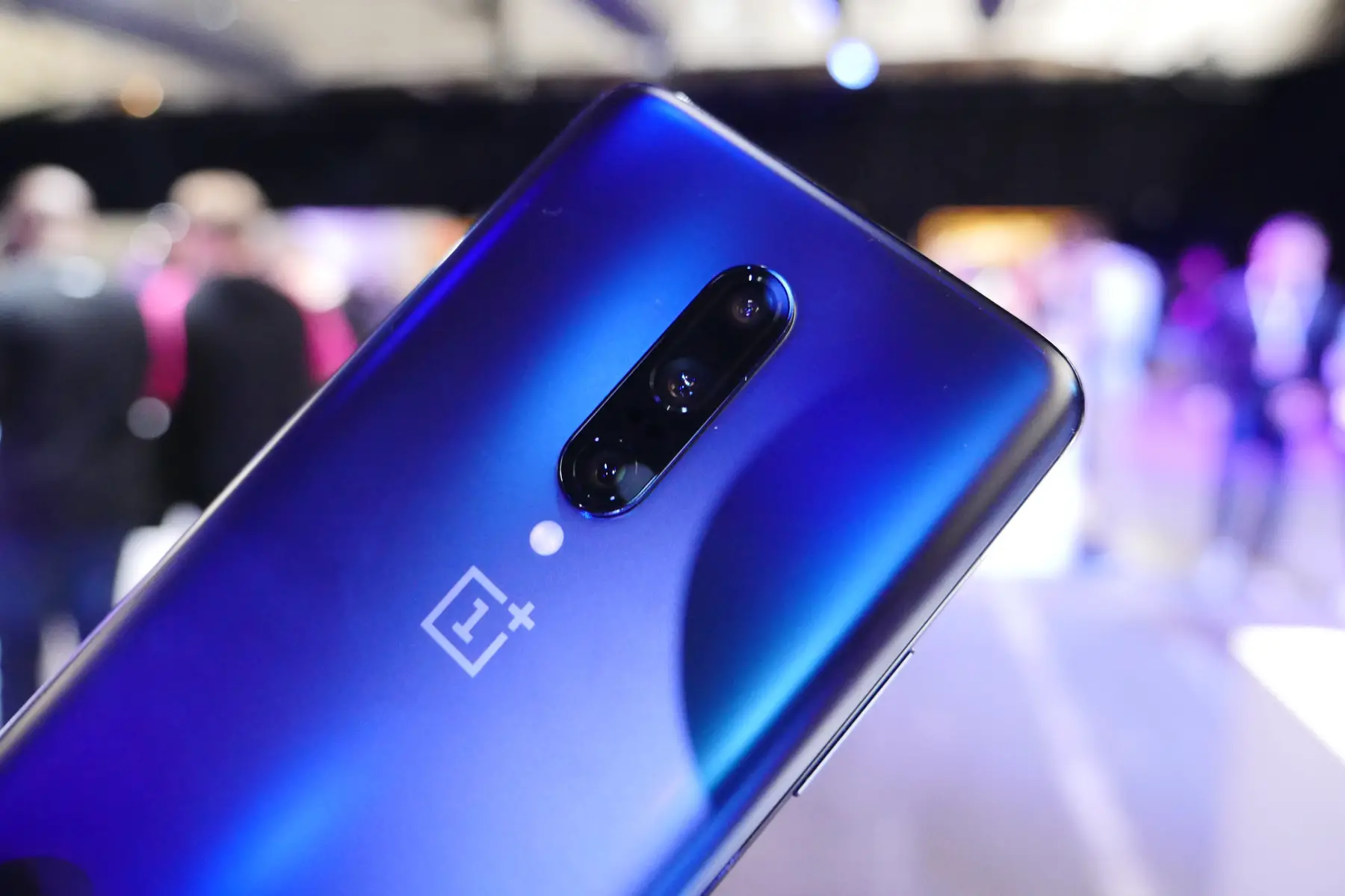
The last major point to touch on is the camera performance offered by the Oneplus 7 Pro. When the device was unveiled, they made a big deal about its grandiose DxOMark score and the multi-lens system which was rated higher than that of the Galaxy S10+, but testing it for myself, I was mildly disappointed. Apparently, the software that shipped at launch wasn’t the same software used when the phone was sent to DxOMark to testing. Over the past 6 weeks, OnePlus has released multiple software updates which have slowly improved image quality. But before we get to that, let’s break down the camera setup that you get with this phone.
On the back, there is a triple camera array comprised of standard, ultra-wide and telephoto lenses with their corresponding sensors. The main sensor is paired with an f/1.6 lens and OIS. This is the same Sony sensor that we’ve seen on a dozen or so other flagship devices this year which means the images are pretty spectacular. When using it in auto and comparing it to other flagship devices, the OnePlus still comes up a bit short, but only if you’re doing side-by-side comparisons. The images are still incredibly crisp, the white balance usually hits it just right and colors are typically pretty good if you don’t mind an extra touch of saturation.
Low-light images turn out great as well, especially if you use the night mode feature. It’s not quite as good as the Pixel’s Night Sight, but it’s much better than what you get with the default setting in low-light situations.
Personally, my favorite part of the camera is the 13mm ultra-wide lens which allows you to capture stunning panorama shots. The 16MP sensor it’s paired with isn’t as sharp as the main camera, but you really can’t tell unless you’re zooming in to see the details. I do wish that it performed better in low-light situations or if the night mode setting worked here as well. Another downside is that you can’t record video with the wide-angle lens.

The 3x zoom lens on the phone is decent as well if you’re looking to capture an image of something that’s far away. But OnePlus was caught fudging the numbers here since the lens actually delivers a 2.2x zoom and a 13MP sensor which crops into 8MP images which effectively delivers 3x zoom. The 2.2x magnification kicks in when you capture portrait shots with the phone. This mode actually turns out some fantastic images. The magnification and the software do a great job of isolating the foreground subject from the background. There’s room for improvement, but this is the best we’ve seen from OnePlus.

Naturally, the pop-up front-facing camera deserves to be in the spotlight as well, mainly because it allows the phone to have an incredible edge-to-edge display. The image quality you get from the 16MP sensor is pretty good and selfie video is pretty stable as well since you get EIS. Those worried about the durability of the pop-up mechanism will be pleased to know that there’s a built-in drop-detection system which pulls the camera back in if the phone detects that it’s been dropped. The company’s testing has also ensured that it will last long after you’ve traded in the 7 Pro for another device.
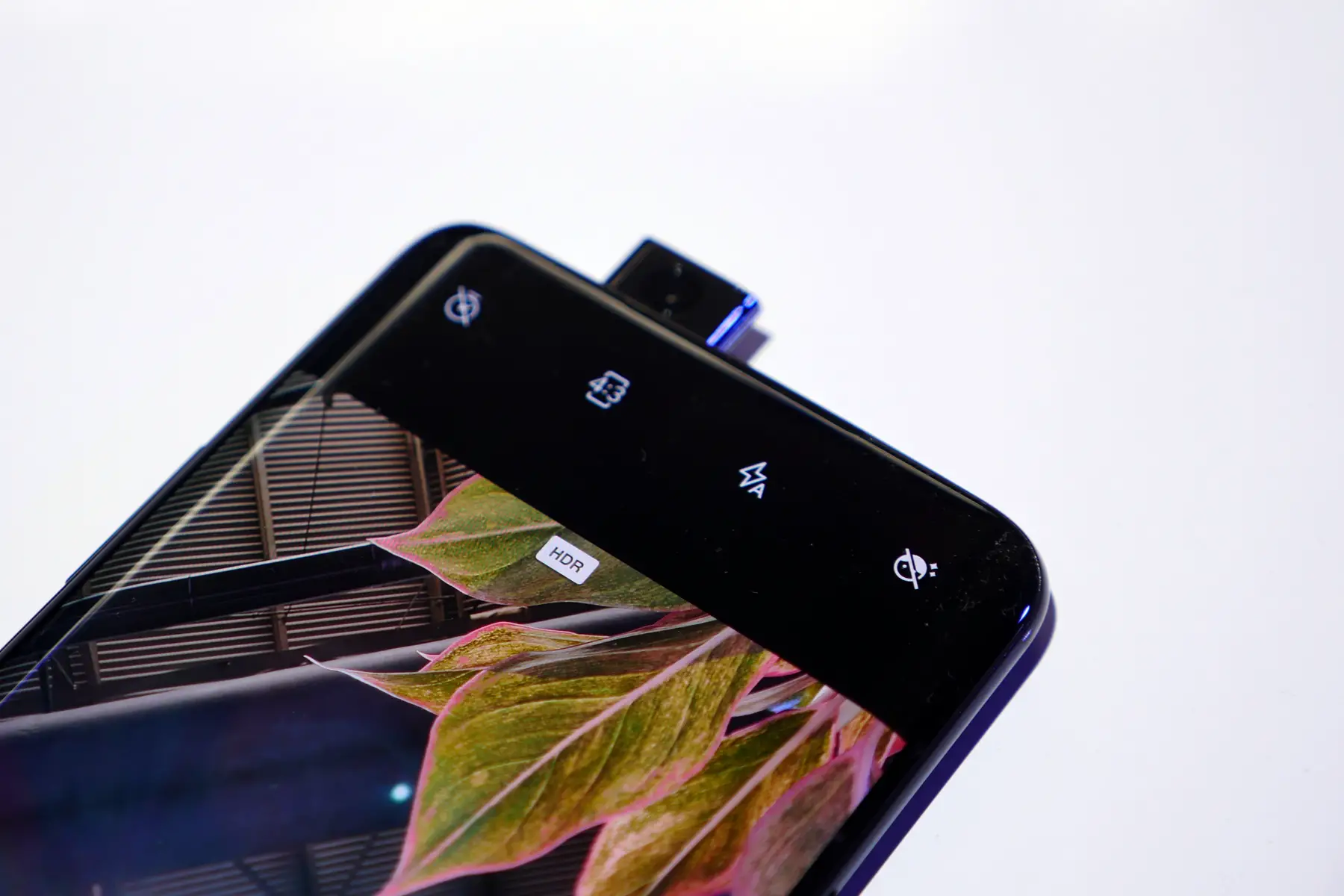
Last but not least is the software experience that OnePlus is known for. Oxygen OS is as clean and customizable as ever. It’s essentially stock android with improvements baked into just the right spots to give you a bit more flexibility and power. There are a few new features this time around which expand the functionality of the device. The built-in screen recorder is something Oneplus users have been clamoring for every year and Zen Mode essentially puts your smartphone into a 20 minute time out, only allowing you to make emergency phone calls. The features is great for those who have issues putting their phone down, but the lack of an override is a bit frustrating. The best new feature is Night Mode 2.0 which filters out blue light from the display and allows you to reduce its brightness to just 0.27 nits which is perfect if you need to use your phone at night and don’t want to light up the entire room.
Those who have been waiting for a true flagship from OnePlus should be thrilled with this smartphone. It checks all the right boxes, especially the price, but like every other device out there, it still has its flaws. The company has been pushing out camera updates every few weeks, but it’s still not on par with what Samsung and Google can deliver and the size of the phone with its curved glass on the front will be hard to use for some. If you’re willing to live with those shortcomings, the OnePlus 7 Pro is the best smartphone money can buy if you’re not interested in spending over $700 on a new device. And with prices creeping upwards each and every year, that’s one of the most important factors to consider these days.

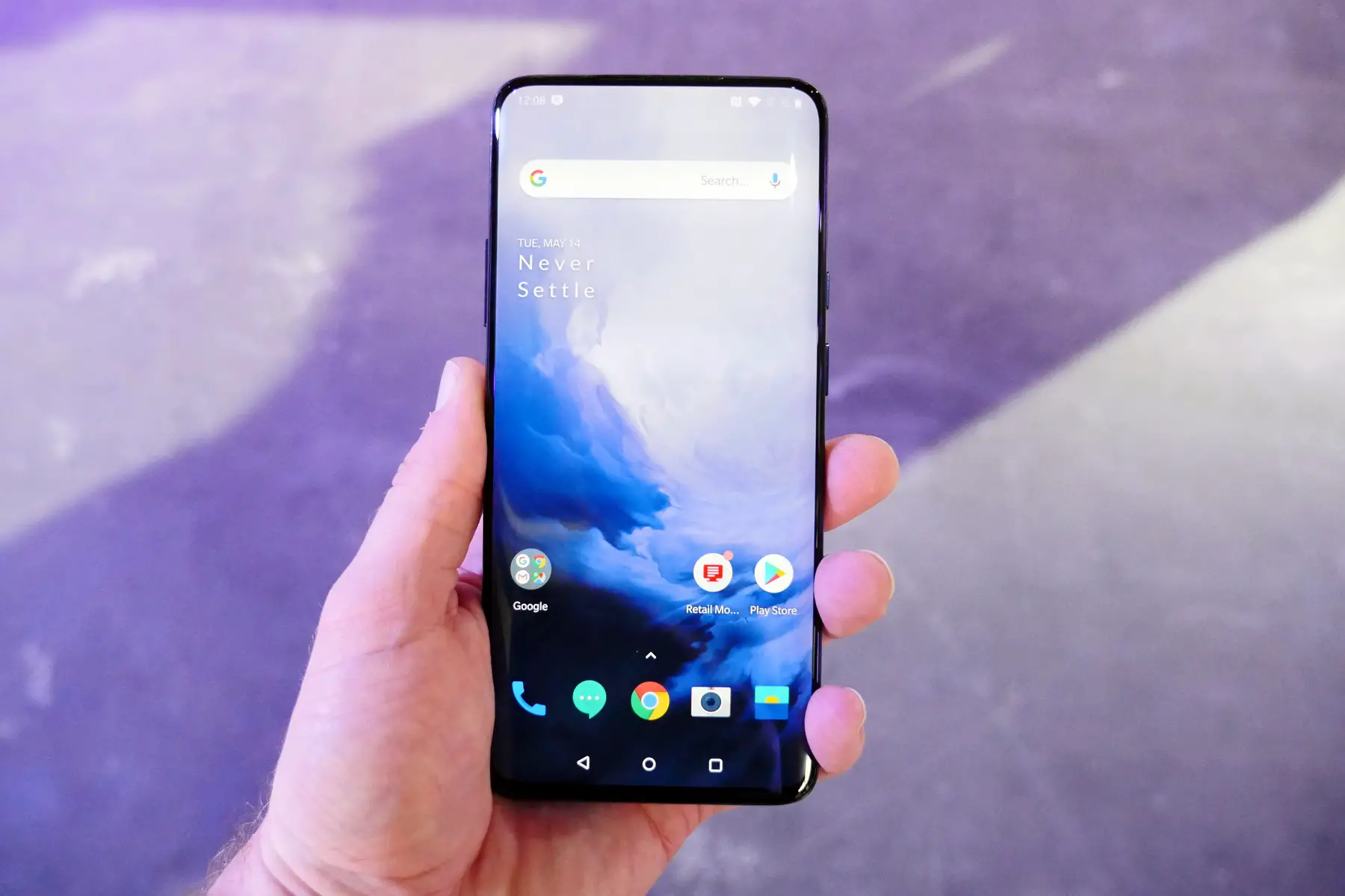





























Comments